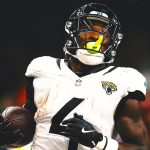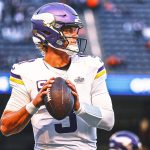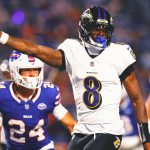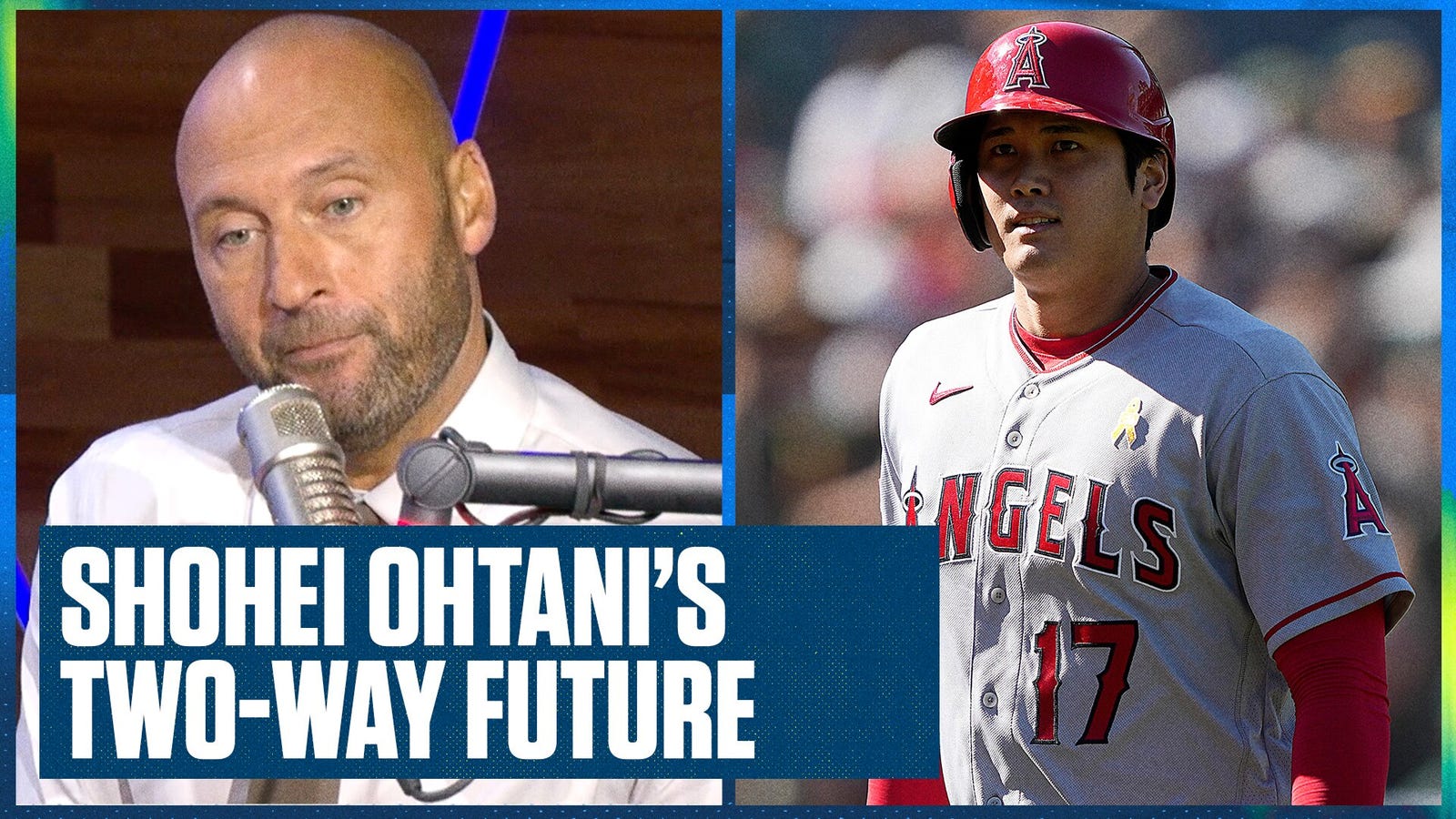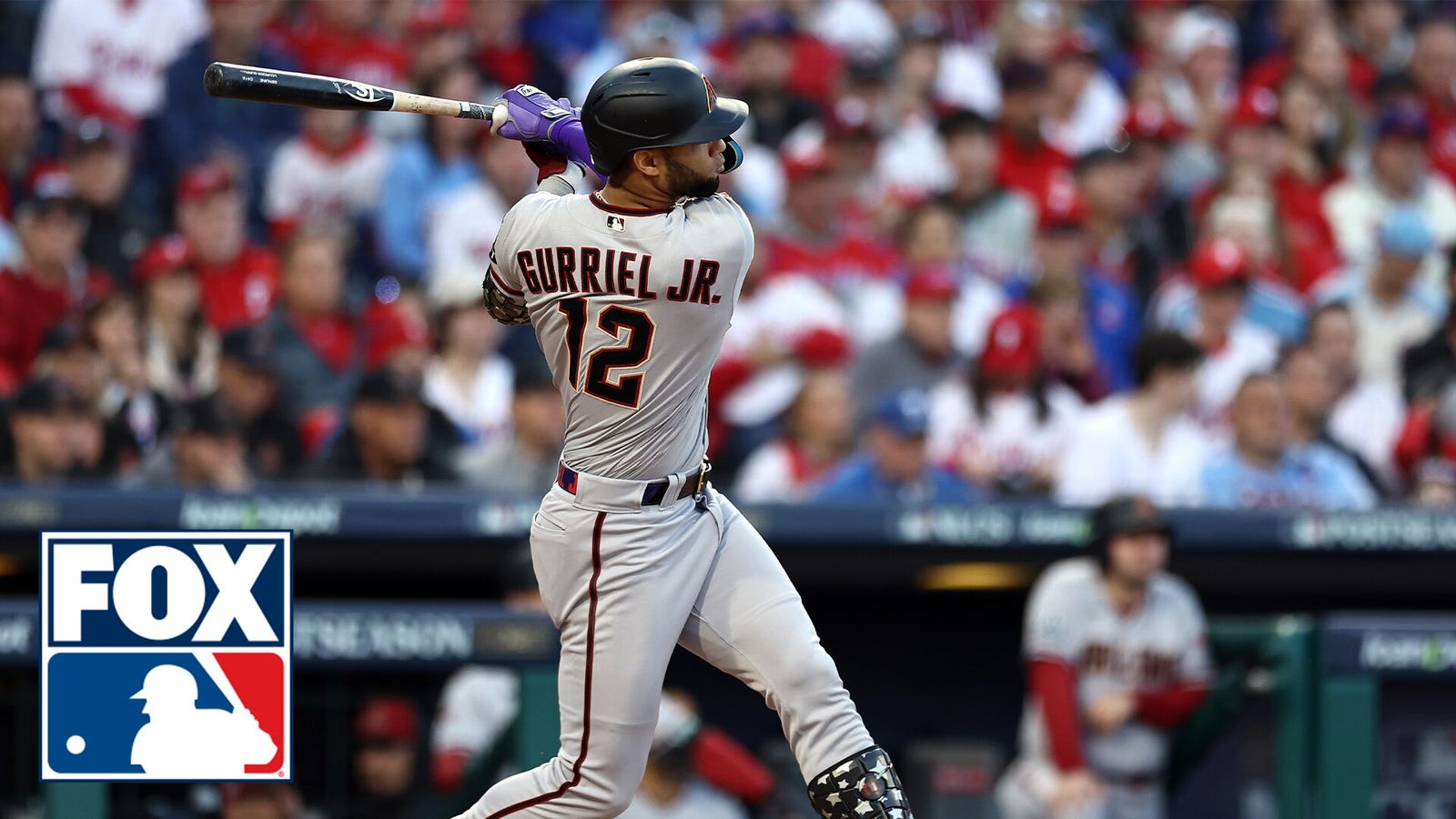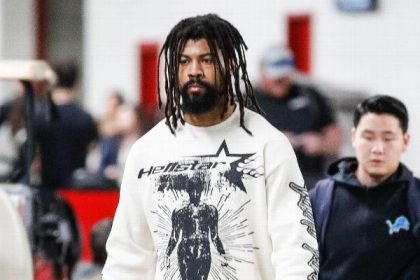As the party surely rolls on across the Dallas-Fort Worth metroplex after the Texas Rangers‘ first World Series title in franchise history, the rest of the baseball world — and soon Rangers general manager Chris Young and his front office — now turns the page to another off-season of transactional hopes and dreams. We all know this is going to be the winter of Shohei Ohtani, but there are plenty of other free agents who could drastically alter the course of the 2024 season and beyond based on where they land.
Without further ado, here’s my list of the top 30 free agents. These rankings are based on conversations with people in and around the game regarding how highly regarded these players are expected to be on the open market, and my own assessment of these players’ ability to produce in the short and long term.
(Players’ ages in 2024 season listed in parentheses.)
The Greatest Free Agent of All Time
ADVERTISEMENT
1. Shohei Ohtani (29)
If Ohtani wants to sign the most lucrative contract in baseball history, he will in all likelihood have the opportunity to do so. But just as it was the first time around in 2017, what makes Ohtani’s free agency supremely fascinating — beyond the obvious intrigue of which team will be lucky enough to acquire the most talented player the game has ever seen — is the air of mystery that surrounds the superstar’s true priorities entering free agency. We have some clues based on the seven finalists during his initial free agency, but a lot has changed since then for those teams as well as Ohtani himself.
After six losing seasons in Anaheim, does Ohtani want a chance to win more than anything? Does he want to join a ready-made contender, or a team where his addition puts the roster over the top? Is it about going to a place where he can still be fully in charge of his unique routine of preparation the way he was with the Angels? Does he just want to break the bank to a historic degree? Is a comfortable lifestyle away from the field most important?
Fans and pundits can speculate and debate the merits of each, but any of these answers — let alone aspects we might not even be considering — are valid. Ohtani has earned the right to choose whatever he desires. The money will matter to some degree, surely, but if there is a team out there that Ohtani genuinely wants to play for, it seems likely that said team will find a way to make it work regardless of the financial specifics.
That said, the structure of Ohtani’s next contract may very well be unlike anything we’ve ever seen, and not just for its magnitude of dollars. The elbow surgery he recently underwent that will keep the two-way sensation off the mound for 2024 introduces the question of whether Ohtani — or an unlikely suitor — would consider a shorter-term opportunity to merely hit for a team before re-opening his availability in 2025 or soon thereafter. It’s an added wrinkle to an already unprecedented pursuit of a singular talent on the open market.
At a bare minimum, Ohtani — one of the best hitters on the planet — is expected to be able to hit in 2024. That’s going to be enough to drive the market on its own. But everything else that comes along with him — the possibility that he can indeed eventually return to being an extraordinary two-way force; his impact off-the-field as the game’s most global superstar — is what makes this the most anticipated free agency in baseball history. Buckle up.
Frontline Arms
2. Yoshinobu Yamamoto (25)
Part of me feels like ranking a 5-foot-10 righty who has yet to throw a big-league pitch over guys like Aaron Nola and Blake Snell is overly aggressive. However, if you talk to people in and around the industry, the admiration for what Yamamoto has already accomplished, and most importantly, what he could become, cannot be understated. If a 1.82 ERA in nearly 900 career innings doesn’t say enough on its own, consider that Yamamoto offers notably better command of an even deeper arsenal than what Kodai Senga (who was also five years older) brought to the table a year ago — and it’s safe to say Senga worked out pretty well in Year 1.
Not only does Yamamoto bring plus velocity with a dastardly splitter, he also throws both a four-seam and two-seam fastball, a low-90s cutter, and a high-70s curveball. It’s an absurdly deep repertoire more in line with what we saw from Yu Darvish when he first came over from NPB, and he’s got near-elite command of every weapon. Yamamoto’s strikeout totals in NPH don’t wow as much as Darvish’s did, but it’s reasonable to assume he’d pursue more punchouts in MLB where hitters are easier to exploit for whiffs than the higher percentage of contact-oriented opponents in NPB. Other than his relatively diminutive frame, there’s not much more you want in a free-agent starting pitcher.
In turn, Yamamoto earns the top non-Ohtani spot in the rankings, and appears in strong position to command a similar if not greater deal than the seven-year, $155 million megadeal Masahiro Tanaka signed with the Yankees a decade ago when he too was entering his age-25 season after sufficiently proving his worth in NPB.
3. Aaron Nola (31)
4. Blake Snell (31)
Though drastically different pitchers stylistically, Snell and Nola have charted somewhat similar paths to get to this exciting stage of their careers as two of the most attractive players on the free-agent market. Both would have hit free agency sooner had they not signed extensions (Snell for $50 million, Nola for $56.75 million) five years ago while coming off monster 2018 campaigns (Snell won the AL Cy Young; Nola finished third in the NL race) that ultimately kept them under contract through 2023. Those deals were considered team-friendly at the time, but also offered a notoriously risky starting pitching demographic a significant measure of financial security while maintaining the opportunity to eventually hit free agency at a reasonable age should they continue to perform well.
Well, mission accomplished, and a far larger payday currently awaits each ace. Now, interested teams must determine which ace is more worthy of a sizable long-term commitment: a right-hander in Nola who has proven to be the most durable starter in baseball alongside Gerrit Cole, or a lefty in Snell whose top-end stuff and streaks of dominance are nearly unmatched across the league but who also comes with volatile command and a spottier injury track record. Nola is surely the safer bet to maintain his value over the bulk of the contract, but Snell is a superior option for a team trying to dramatically improve its rotation in 2024.
The best non-Ohtani position player on the market
5. Cody Bellinger (28)
Bellinger rebounding in a big way after a couple of ugly seasons is not a huge shock. It’s much more about how he did it that has his profile as a player — and free agent — in such a fascinating spot. In his first year away from the Dodgers, Bellinger completely reinvented himself as a hitter, trading high-end exit velocity for dramatically improved contact rates and, most shockingly, a sudden ability to crush left-handed pitching. Rather than rediscover the prodigious power stroke that produced 47 homers and an NL MVP award in 2019, Bellinger hit a career-high .307 with a career-low 15.7% strikeout rate, all while still providing a nearly one-of-a-kind combination of plus defense at both first base and center field.
To be clear, it’s not like Bellinger became a slap hitter — he still collected 56 extra-base hits along the way. It’s unclear whether the career lows in average exit velocity and hard-hit rate were a product of his new approach or simply his new reality after some of the injuries he dealt with from 2020 to 2022. If Bellinger can pair his newfound knack for consistent contact with even a tick more thump more in line with the earlier stages of his career, he could re-assert himself as one of the game’s best players. But even without a return to the top of the dinger leaderboards, this new version of Bellinger should have ample suitors on the open market, especially at just 28 years old.
Near aces, but not quite
6. Jordan Montgomery (31)
7. Sonny Gray (34)
It’s easy to get carried away thinking Montgomery’s fantastic October showing with the World Series champs will inflate his market considerably, but the selling point for Montgomery remains the same as if the Rangers had missed the playoffs: he’s left-handed, he’s durable, and his success doesn’t rely on high-end velocity that may decline as he ages. It’s a diet version of Nola in many respects, but with the added bonus of Montgomery having just burnished his reputation as a big-game pitcher.
At the same time, Montgomery’s breakout in 2023 does suggest there may be another level for him to reach in the next stage of his career, whereas it’s harder to envision Gray getting significantly better as he enters his mid-30s. Like with Snell relative to Nola, there might be more upside in signing Gray in the short term, but the injury history and age discrepancy here makes Montgomery a more likely candidate to land a long-term deal at or approaching nine figures.
Who we thought would be the best non-Ohtani position player on the market
8. Matt Chapman (31)
Chapman appeared very much on track for a massive payday in free agency with how his season began. His 1.152 OPS in April was the highest of any individual month of his career. The third baseman, long known for his elite glovework, was suddenly showcasing the best offensive version of himself we’d ever seen, seemingly at the perfect time.
To refer to what happened next as merely a case of humbling regression would be a severe understatement: Chapman’s OPS in May plummeted to .585, the fourth-worst individual month he had recorded at the plate as a big leaguer. Chapman rebounded with a stronger June and July before again sinking back to the ugly depths of an August in which he posted the worst OPS (.532) in a month of his career. Even factoring in a fair bit of luck in both directions, the whiplash of his volatile performance was tough to square as the summer went on. Fortunately for Chapman, even with the fluctuating nature of his offensive production, the free-agent profile here remains enticing, especially in a shallow position-player class.
He might not be one of the inner-circle best defenders at the hot corner anymore, but we are still talking about a sure-handed third baseman who consistently crushes the ball — Chapman’s 56.4% hard-hit rate ranked second in MLB behind Aaron Judge, and he’s ranked in the 85th percentile or higher in barrel percentage in each of the past five seasons. You might not know what you’re getting from month to month in a hitter like Chapman, but you generally know what you’re getting over the course of a full season. There’s a ton of value for that, particularly for a plus defender at an important position. He’ll be paid accordingly.
The Closer
9. Josh Hader (30)
I’m as wary of anyone when it comes to committing serious resources toward relievers, whether in free agency or in the form of prospect capital via trade. But if you’re going to pay top dollar for a reliever, it might as well be one of the best of his generation, and that’s what Hader is. We saw Edwin Díaz set a new precedent for closer contracts a year ago with his $102 million pact with the Mets, and now Hader enters the market with an arguably stronger track record of game-ending excellence.
That doesn’t mean there isn’t still massive risk involved in investing heavily in a one-inning reliever whose ERA can fluctuate wildly based on a handful of catastrophic outings. Hader at his best, though, can slam the door on a tight ballgame better than just about anyone, and there are always teams craving pitchers with that high-leverage skill set. I doubt he’ll top Diaz’s number, but I don’t think he’ll fall that short of it, either.
The latest edition of “Dodgers, Rangers or retirement” — this time, with a twist
10. Clayton Kershaw (36)
Here we go again. However, Kershaw’s announcement Friday that he recently underwent shoulder surgery and that he hopes to return sometime next summer suggests that we haven’t seen him throw his last pitch — which is especially encouraging considering how his season ended in crash-and-burn fashion in the NLDS against the Diamondbacks. Kershaw’s regular-season résumé remains impeccable in recent years even with the ongoing injury battles, hence his continued inclusion near the top of annual free-agent rankings.
Coming back from shoulder surgery at this age would be no small feat, and it’s difficult to know how it impacts the likelihood that he would even sign a new contract this winter, even with the stated intention to return to play. Perhaps he’d prefer to wait until deeper into his rehab process to sign a new contract. If anything, the Rangers element just became a lot more interesting coming off a World Series title than recent offseasons when we were pondering if he’d sign with a losing team just to play at home. A return to L.A. still feels most likely; it’s just tough to know how quickly such a deal might come together this time around.
Second-tier starters
11. Eduardo Rodríguez (31)
12. Lucas Giolito (29)
13. Marcus Stroman (33)
Three months ago, Rodríguez surprisingly exercised his no-trade clause to squash a deadline deal from the Tigers to the Dodgers. For the season, he looked as good as we’ve seen him since he received down-ballot Cy Young votes in 2019, which is why he opted out of the remaining $49 million over three years on his contract to secure more on the open market. That could mean returning to Detroit, where we know he is comfortable.
Giolito was hardly at his best in 2023. His walk rate spiked to an untenable 11.6% and he surrendered a staggering 41 home runs. For as bad as Giolito was, it’s hard to imagine that his unpredictable odyssey bouncing between three different losing teams was the most conducive environment for him to put his best foot forward in a contract year. No matter the context, the results can’t be overlooked entirely. There was an opportunity for Giolito’s performance to launch him up toward the Montgomery/Gray tier of the market and that clearly did not happen. Still, Giolito offers a combination of youth, durability and upside that few other starting pitchers can, and his ranking reflects that.
It was at least a mild surprise to see Stroman opt out of $21 million guaranteed for 2024 and into a fairly deep pitching market. That said, Stroman does strike me as the kind of personality that is fully confident in his ability to land a longer and more lucrative deal — especially considering the excellent first half he recorded in 2023 before injuries derailed his season (2.47 ERA over his first 17 starts). Assuming the rare rib injury he endured in the second half is not a significant issue moving forward, Stroman still offers one of the deeper arsenals of any starting pitcher, and one that isn’t reliant on high-end velocity to succeed. The biggest red flag in his profile in 2023 was a spike in free passes to a career-high 9%, but he’s still inducing an exceptional amount of ground balls to often mitigate some of the big innings those walks walks tend to lead to. A healthy Stroman would help plenty of teams’ run prevention efforts.
Best international bat available
13. Jung Hoo Lee (25)
Had Lee not suffered a season-ending ankle injury in June, I have a feeling there’d be a ton more excitement surrounding his impending jump from the KBO to MLB. Lee has been one of, if not the best all-around player in Korea for several years now, and arrives as an even more promising prospect than his former Kiwoom Heroes teammate Ha-Seong Kim. Though Kim boasted more power and the ability to stick in the infield, Lee’s pure hit tool (he’s a career .340 hitter in nearly 4,000 career plate appearances) has long been regarded as one of the best of any non-MLB player, and his plus defense in center field rounds out a balanced profile that isn’t entirely reliant on his bat to translate right away. Just as it took Kim some time to find his footing as an MLB hitter, Lee mioght also need some time to fully acclimate. At just 25, though, plenty of teams will be eager to give him that opportunity.
Big power with a whole lotta whiffs
14. Jorge Soler (32)
Soler’s second year in Miami was a strong indication that his injury-plagued debut with the Fish in 2022 was merely an aberration. Not only did him re-establish himself as one of baseball’s premier home run hitters, he actually cut down on the strikeouts to a reasonable 24.3% and recorded his highest walk rate since 2016. If he can’t prove to be a reliable option in the outfield the way he’s trended in recent years, there will only be more pressure on him to continue producing at exceptional levels at the plate. But any team that trusts him as an everyday right fielder should be eager to bring him in as an impactful addition to the lineup.
15. JD Martinez (36)
After a relative power outage by his standards in 2022, Martinez got back to pummeling baseballs in 2023. His .572 slugging percentage ranked eighth among hitters with at least 450 plate appearances, and his average exit velocity, barrel-rate, and hard-hit rate all ranked in the 98th percentile, demonstrating a return to elite quality of contact. However, this return to his slugging ways also came with a career-high 31.1% strikeout rate that might have some teams wary of his production as he enters his late-30s. With his outfield days fully behind him, Martinez must continue to absolutely mash to be worth the AAV he will likely command. This ranking suggests a fairly high level of trust that he can do that.
16. Teoscar Hernández (31)
Hernandez’s already troubling plate discipline numbers regressed to an even uglier level in 2023, with a career-low 5.6% walk rate and a 31.1% strikeout rate that was fifth-highest among all qualified hitters. He was also (unsurprisingly) hurt dramatically by his home ballpark in Seattle; his OPS was nearly 200 points better on the road (.830) compared to T-Mobile Park (.643). There were a bunch of deep flyouts that very well could have left the yard in a friendlier environment — the kind he’ll surely be seeking with his next team. He can still impact the ball with authority when he does connect, as evidenced by his 88th percentile barrel rate and 81st percentile average exit velocity, but the ugly strikeout-to-walk ratio and limited defensive value (though still more than Soler or Martinez) could scare off some teams.
Relatively young and reliable role players
17. Jeimer Candelario (30)
18. Lourdes Gurriel Jr. (30)
Candelario parlayed a loud first half with the Nationals into a trade to the organization that developed him in the Cubs, where he continued to produce down the stretch, finishing with a career-high 22 homers. While most switch-hitters tend to favor one side, Candelario’s calling card has long been an impressively similar level of production batting both ways: Over the past three seasons, Candelario has posted an .755 OPS batting lefty and a .747 OPS swinging right-handed. The overall output might not jump off the Baseball-Reference page the way some of the hitters ahead of him on this list do, but that balanced batting diet is tough to find, let alone from someone who can capably play a position as important as third base. He’s a really solid player.
What Gurriel might lack in power more typically associated with star corner outfielders he makes up for with excellent contact ability and a strong defensive profile in the outfield, headlined by one of the strongest left field arms in the league. He’s been an above-average hitter in all six seasons as a big leaguer and is coming off his first All-Star appearance for the NL champion D-backs.
Good defense in left field isn’t as valuable as average defense at third base, so Candelario deserves the nod between the two. But the relative youth and reliable production puts these two role players in the same tier, and I think a lot of teams would be happy to have them.
Tommy Pham and Lourdes Gurriel Jr. hit back-to-back home runs to help contribute to Diamondbacks’ 5-1 win over Phillies
Proven bats with one big question
19. Justin Turner (39)
20. Mitch Garver (33)
21. Rhys Hoskins (31)
Turner’s bat was a bright spot in an otherwise slog of a Red Sox season. His contact skills remain intact, but a marked decline in barrel rate and hard-hit rate suggest there might be something of a power outage nearing as he enters his age-39 season, especially in a ballpark that isn’t as perfectly suited to his swing and style as Fenway Park.
Garver (128 wRC+ over the past three seasons) was a key cog for a juggernaut Rangers offense that just won it all — not a bad elevator pitch! But the difference between him getting paid and him getting paid will be whether a team believes he can reliably catch consistently, or if he’s strictly a 1B/DH type. And then there’s Hoskins, whose track record of power production at first base was as steady as it gets until a torn ACL wiped out his entire 2023 season. Last winter, we saw Hoskins’ agent Scott Boras secure a multi-year deal for a proven bat coming off a missed season in Michael Conforto; I’d expect a similar outcome for Hoskins.
Third-tier starters
22. Seth Lugo (34)
After seven seasons in Queens, Lugo left the Mets in free agency in search of a team willing to let him prove himself as a starter. He did exactly that in San Diego, and now represents one of the more intriguing mid-rotation options on the market as someone who throws a ton of strikes and can still spin a great breaking ball. His surface stats might not blow you away, but a ton of teams would happily sign up for a mid-3s ERA over 150 frames, as Lugo just demonstrated he can provide.
23. Shota Imanaga (30)
He’s no Yamamoto, but Imanaga followed up an excellent showing in the World Baseball Classic with an outstanding campaign in NPB. He posted a career-high 29.2% strikeout rate that ranked tops among all qualified starters — yes, even ahead of Yamamoto who was second at 26.6%. Imanaga attacks with a low-90s heater, two different breaking balls, and, of course, a nasty splitter — and his entire arsenal plays up due to plus command. He’s an exciting option for teams seeking left-handed starting pitching that might not want to mess around in the Snell/Montgomery level of the market.
24. Kenta Maeda (36)
Speaking of former NPB aces, Maeda was sneaky solid in his return from Tommy John surgery, posting a 20.8 K-BB% that was best among all free-agent starting pitchers not named Ohtani. Even at 36 and with below-average fastball velocity, Maeda’s exceptional array of secondary stuff makes me like his chances of maintaining a mid-rotation standard for another few years, especially as he gets further removed from surgery.
25. Michael Wacha (32)
With Snell and Lugo out the door, it seemed like the Padres might have strongly considered exercising the two-year $32 million option on Wacha so as to avoid needing even more innings to replace in 2024. Instead, they declined, adding another intriguing starting pitching option to this tier of the market. It’s been an odd career for Wacha, a star in his early days with St. Louis before regressing into a below-average option in his late-20s right when players usually enter their prime. Though health has been something of a challenge over the past two years — and perhaps the reason behind the lack of trust in him moving forward for San Diego — Wacha has re-asserted himself as a solid No. 3 or 4 starter when available. Among 74 pitchers with at least 250 innings over the past two seasons, Wacha’s 3.27 ERA ranks 22nd, sandwiched between Zack Wheeler and Merrill Kelly on the leaderboard. As his velocity has declined over the years, he’s emphasized his sinker more than his four-seam and leaned heavily on his plus-plus changeup to garner whiffs. He’ll likely continue to make the necessary tweaks to his arsenal as he ages, but he’s an attractive rotation option for a team confident that it can keep him on the mound.
Veteran lefty slugger
25. Brandon Belt (36)
26. Joc Pederson (32)
Despite a sterling .858 OPS in his stint north of the border, Belt falls into this category as a primary platoon bat, limiting his roster utility for his next team. The guy continues to pummel right-handers, though, and finished the season especially strong, making him an attractive fit for any team looking for left-handed pop, even entering his age-36 season.
Pederson offers a similar profile, is four years younger, and can at least still fake it in the outfield. His surface numbers dipped from his All-Star campaign in 2022 but the underlying batted ball data (90th percentile xwOBA, 96th percentile hard-hit rate) was as good as ever and suggests he still has plenty to give on offense.
Helping both of these players’ markets is that none of them are eligible to receive a qualifying offer, so their signings will not lead to a lost draft pick.
Flamethrowing relievers
29. Jordan Hicks (27)
Hicks might not boast the certified closer reputation of Hader atop the relief market, but he has a legitimate claim as baseball’s hardest-throwing pitcher and is coming off a career year in which he recorded a career-best 28.4% strikeout rate while continuing to yield a ton of grounders with his overwhelming sinker. At just 27, he’s also one of the youngest arms available on the market, raising the likelihood that he could garner the rare relief contract longer than three years.
30. Yariel Rodríguez (27)
Rodríguez, who starred for Team Cuba at the World Baseball Classic, is a much bigger unknown, albeit one with significant upside if he lands in the right situation. Originally a starting pitcher earlier in his pro career in Cuba, Rodríguez signed with the Chunichi Dragons in Japan’s NPB and quickly established himself as one of the better relievers in the league from 2020 to 2022. He didn’t pitch in Japan in 2023 after the WBC, instead opting to work out in the Dominican Republic to prepare for MLB free agency.
It’s possible that some suitors still view him as a potential starting pitcher, which could expand and escalate his market. If not, he looks like another power arm that could fit in a big-league bullpen right away, hence his inclusion here with Hicks at the end of these rankings.
*Coming soon: top 30 free-agent pitchers; top 30 free-agent hitters
Jordan Shusterman is half of @CespedesBBQ and a baseball writer for FOX Sports. He has covered baseball for his entire adult life, most notably for MLB.com, DAZN and The Ringer. He’s a Mariners fan living in the Eastern Time Zone, which means he loves a good 10 p.m. first pitch. You can follow him on Twitter @j_shusterman_.
Flippin’ Bats:
MLB trending
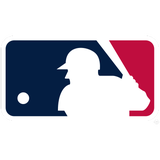
Get more from Major League Baseball Follow your favorites to get information about games, news and more

